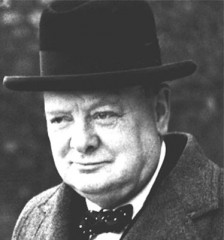Yo Kass answered
 Winston Churchill was an English statesman who was born on November 30, 1874 in Blenheim Palace in Woodstock, Oxfordshire, England. He died on January 24, 1965 from complications of a stroke and cerebral thrombosis.
Winston Churchill was an English statesman who was born on November 30, 1874 in Blenheim Palace in Woodstock, Oxfordshire, England. He died on January 24, 1965 from complications of a stroke and cerebral thrombosis. Churchill was an English statesman, author and soldier, but was best known for having been the Prime Minister of the United Kingdom during World War II. He is also known as one of the most important and most influential leaders in British and world history. The strength and inspiration Churchill showed during his term as the Prime Minister of the United Kingdom left a mark on the world, and has assured him a place amongst the world's greatest leaders. He was also recognized with a Nobel Prize in Literature for his works relating to history and the war.
Winston Churchill did have a tattoo. It was a tattoo of a ship's anchor and was located on his right arm. His mother, Lady Randolph Churchill also had a tattoo of a snake on her right wrist - which may have been a factor in encouraging Winston Churchill to get a tattoo himself.
Tattoos first became fashionable in the late 19th and early 20th centuries, and were something of an aristocratic novelty.
Both men and women were tattooed and, at the time, the process was very expensive and designs often came with a hefty price tag.